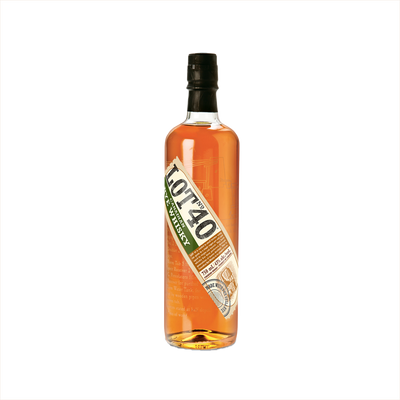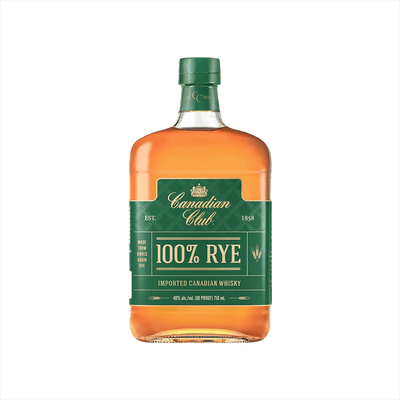Canadian Whisky
What is Canadian Whisky?
Canadian whisky is a distinct style of whiskey that must be produced in Canada from cereal grains, aged in wooden containers for at least three years, and bottled at no less than 40% alcohol by volume. What sets Canadian whisky apart is its flexibility in production methods and blending practices, allowing distillers to create smooth, approachable spirits that often incorporate multiple grain types including corn, wheat, rye, and barley. The category is known for its light, clean character and masterful blending techniques that have made brands like Crown Royal and Canadian Club household names worldwide.
Learn More About Canadian Whisky
What makes Canadian Whisky unique?
Canadian whisky stands apart thanks to its flexible blending regulations that allow distillers to mix grain whiskies aged in different barrel types, creating smooth, approachable spirits that often incorporate corn, wheat, and rye in creative proportions. Unlike bourbon's strict mashbill requirements or Scotch's regional limitations, Canadian producers can age their whisky in previously used barrels and blend in small amounts of wine, sherry, or other spirits to add complexity. This freedom results in whiskies that tend to be lighter and more mellow than their American counterparts, with a signature smoothness that made Canadian whisky the best-selling spirit category in North America for much of the 20th century.
How is Canadian Whisky made?
Canadian whisky starts with a mash of grains—typically corn, wheat, rye, and barley—that gets fermented with yeast and distilled in column or pot stills. The spirit must age in wood barrels (usually charred oak) for a minimum of three years, though most premium expressions mature much longer. What makes Canadian whisky unique is the blending process, where distillers combine different grain whiskies to create complex flavor profiles that balance sweetness, spice, and smoothness.
How do you drink Canadian Whisky?
Canadian whisky shines in almost any format you throw at it – neat or on the rocks to appreciate its smooth, approachable character, or mixed into classic cocktails where its balanced profile plays well with other ingredients. You'll find it starring in whisky sours, old fashioneds, and Manhattans, though it's particularly beloved in the Canadian Caesar (their twist on a Bloody Mary) and simple whisky and ginger combinations. Its mellow nature makes Canadian whisky perfect for cozy fall and winter evenings when you want something warming but not overpowering, and it's equally at home at casual backyard gatherings or more formal celebrations where you need a crowd-pleasing spirit that won't intimidate newcomers.
How do I choose a good Canadian Whisky?
Start by considering your flavor preferences—if you enjoy smooth, approachable spirits, look for Canadian whiskies with higher corn content, while those seeking more complexity should seek out rye-forward expressions or aged single malts. Your intended use matters significantly: lighter, grain-forward Canadian whiskies work beautifully in cocktails like Whisky Sours or Manhattans where you want the spirit to blend harmoniously, while richer, more robust bottles deserve to be sipped neat or with just a splash of water. Don't overlook regional producers beyond the big names—smaller distilleries often create distinctive expressions that showcase unique aging techniques or grain bills that can surprise and delight your palate.
Nutritional Information
Typical Calorie Range per Ounce: 64-70 calories
Typical Carbohydrate Range per Ounce: 0 grams
Typical Sugar Range per Ounce: 0 grams
Typically Gluten Free: No
Canadian whisky is distilled from grains including wheat, corn, rye, and barley, which contain gluten proteins. While the distillation process removes most gluten, some sensitive individuals may still react to trace amounts that can remain. Additionally, some Canadian whiskies may use flavorings or additives that contain gluten. For those with celiac disease or severe gluten sensitivity, always check the specific product's detailed information and consult with the manufacturer to confirm gluten-free status before consuming.
Scrolled this far? Your reward? Canadian Whisky Trivia!
- Canadian whisky doesn't legally have to contain any rye at all. While everyone calls it "rye whisky" up north, Canadian regulations only require that it "possesses the aroma, taste, and character generally attributed to Canadian whisky." This means distillers can make it entirely from corn, wheat, or any cereal grain they choose. The rye association comes from tradition, not law.
- Crown Royal was created specifically for King George VI and Queen Elizabeth's 1939 royal visit to Canada. Seagram's master blender Samuel Bronfman spent months perfecting the recipe and commissioned Waterford Crystal to design the distinctive bottle. The purple bag? That was added to protect the precious cargo during the cross-country train journey to greet the royals.
- Canadian distillers can legally add up to 9.09% of any beverage alcohol to their whisky without declaring it on the label. This means they could theoretically add rum, brandy, wine, or even vodka to their final blend. This flexibility, known as the "9.09% rule," gives Canadian whisky makers more blending freedom than almost any other whisky-producing country.
- Hiram Walker built an entire city in Ontario just to avoid paying American taxes on his whisky. In 1858, he established Walkerville (now part of Windsor) directly across the Detroit River from his American operations. His Canadian Club became so popular that American distillers lobbied for laws requiring the words "Canadian Whisky" on the label - thinking it would hurt sales. Instead, it became a badge of honor.
- Canadian whisky saved the American bourbon industry during Prohibition. While American distilleries shuttered, Canadian producers like Gooderham & Worts kept making whisky "for export only" - wink, wink. When Prohibition ended, experienced Canadian distillers helped restart American operations and shared techniques that influenced modern bourbon production. Some say Canadian blending methods are why post-Prohibition American whiskey tastes different from pre-1920 styles.
Higher-proof spirits can be intense. Mix carefully, taste thoughtfully, and enjoy responsibly.
Gift message (optional)





